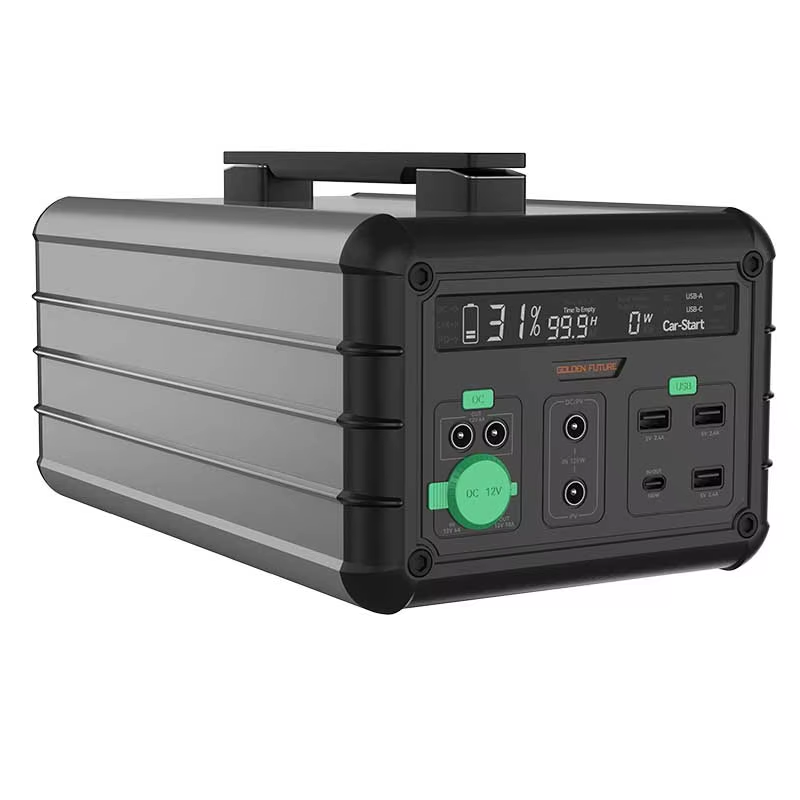Portable Power Station: The Solution to Your Outdoor Power Problems
If you’ve ever fished or camped and had your phone die or your portable fridge stop working, you know the scramble of trying to save the daiy. Such frustrations are eliminated with the ease of having a portable power station. Unlike gas powered generators that are difficult to tow around, a portable power generator fits compactly in the trunk of your car or in your backpack. They are also quieter and emission free, the perfect companion for your outdoor ventures. The only concern that remains is how a power generator that’s portable charges devices with no wall outlet. Let’s tackle that question as simply as possible.
Outdoor Environment Friendly Power Station
To simplify the queries around portable power generators, let’s discuss the four crucial components that work seamlessly and are tailored to the outdoor requirements for power generation.
Lets start with the battery pack. Most people are familiar with lithium-ion batteries. They are lightweight and have a higher charge holding capacity, which is useful in terms of transport. Now, about the inverter. An inverter is similar to a translator because it takes a battery’s DC power and converts it into AC power. Most of your outdoor devices like laptops, cameras, or coolers and use AC power, so the inverter is an imperative device. Moving on to the ports, the power stations have USB ports for mobile devices like tablets and phones, AC ports for larger electronics, and even DC ports for car accessories such as the air pumps and LED lights. Lastly, the charge controller. This part is extremely useful at protecting batteries from over charging or overheating. This is especially useful when batteries are charged with solar panels or during extreme outdoor weather. All the individual power station components combined help to divide the required power optimally, hence making the battery’s capacity immensely useful.
How a Portable Power Station Runs During Your Outdoor Trips
As we have established earlier, portable power stations have a battery capacity that is outdoor optimally divided into three phases: charge, store, and supply.
To begin, the device needs to be charged. You can accomplish this by plugging the device to a standard outlet and letting the device charge. If you’re out and about, you can use a portable solar panel, or charge it using your car’s 12V outlet. You can also plug it to a solar panel. The power stations needs to be portable in order to use solar charging. The device also employs a solar charge controller. Charge controllers will regulate incoming power to prevent damage, and loses. Charge controllers will prevent the battery from dying. Through using a charge controller, your battery will stay intact too. Charge controllers will also prevent damage. The ice heater will draw power from the charge controller and your devices can be charged too. Devices will be automatically charge without making noise. Through using the solar panel, the device will smoothly work.
Why a Portable Power Station Fits Every Outdoor Scenario
For every portable power stations, It is the best due it’s a multi purpose device making it the best for every outdoor need.
For camping, it can power your lantern, your phone, and even runs a mini fridge to keep your snacks and drinks cold. While hiking and backpacking, smaller models can charge your camera and GPS, and are even light and small enough to fit into your backpack. While taking a road trip, charge it in the car and use it to power your laptop at rest stops. During picnics, a portable grill can be used to ignite and a small speaker can be used to play music. Unlike gas generators, these portable power stations do not need to be fueled and are quiet, which is great for wildlife and other campers. These power stations are made to fit the camper’s needs.
How to Make the Best Use of a Portable Power Station When Outdoors
For the most effective use of your power station during activities, these tips will help.
First, make sure the size is right: if you need it for backpacking, a model ranging from 100-200Wh is ideal (lightweight and portable). If camping with a fridge, go for 500Wh and above (it has greater capacity). Second, manage your power: ensure to check the devices’ power requirements before the trip (i.e. a phone consumes about 5Wh per charge, meaning a 200Wh station can charge it more than 30 times). Don’t waste energy on unneeded devices. Third, protect portable power stations from the weather: Most of them are not waterproof, and during rainfall, it’s best to place them in a dry bag or under a tent. Fourth, avoid overheating while charging: solar panels need to be positioned to directly face the sun, otherwise charging is slowed. While charging in cars, avoid leaving the charger plugged in since it can drain the car battery. Adhering to these rules maximally allows for outdoor fun while ensuring the portable station power will be available for years.
To summarize, the power is stored in a lithium-ion battery, then transformed with an inverter to the right type (AC or DC). Power is supplied to the devices through easy to use ports. This solves the “no power” problem that ruins so many outdoor trips – the portable power stations make the trips much more enjoyable.
Unlike traditional bulky generators, this one’s lightweight charge controller, battery, ports, and inverter enable quiet function and even make it safe to use in remote areas. When camping, hiking, road-tripping, or even on a picnic, this device allows for seamless connections, food preservation, and memory capturing. With increased enjoyment during outdoor adventures, it has turned into a must-have for all traveling enthusiasts. The portable power station serves as a comprehensive worry-easing mechanism on all outdoor adventures, ensuring reliable, hassle-free power.

